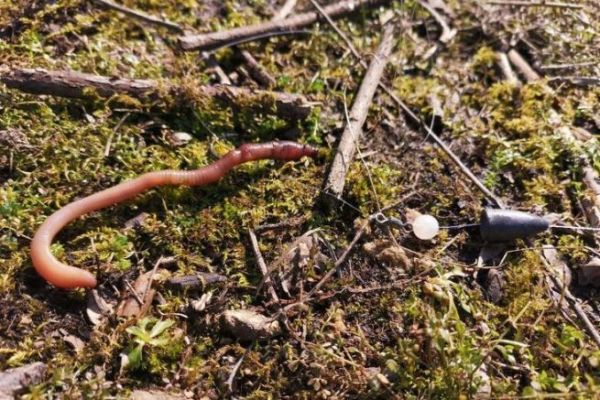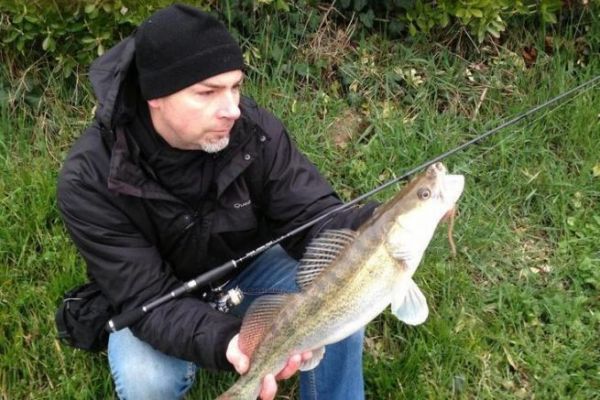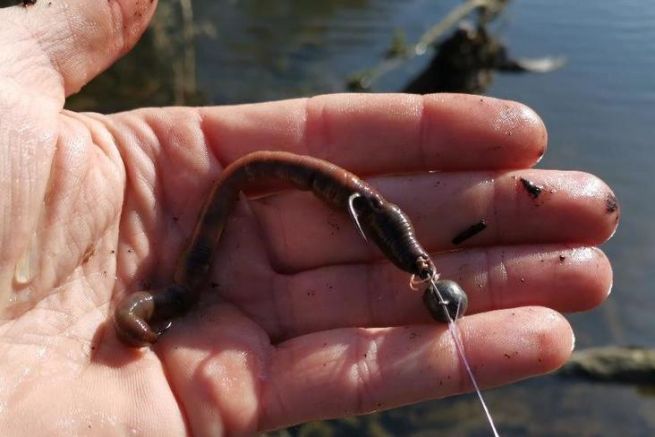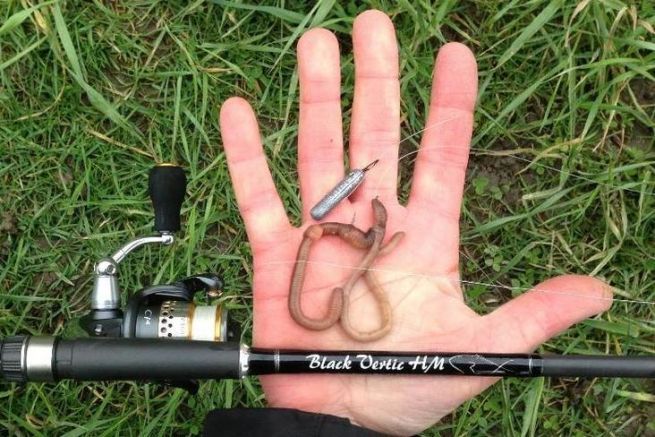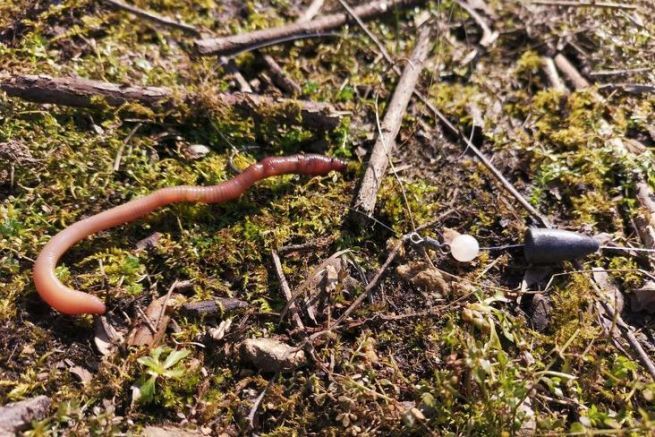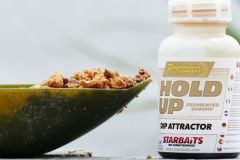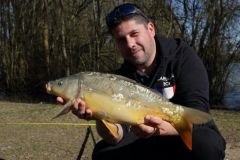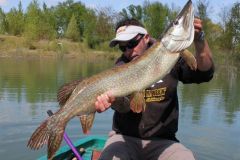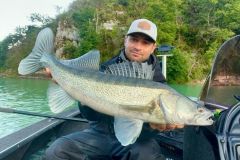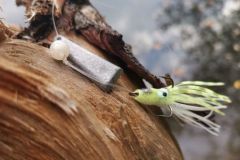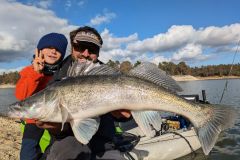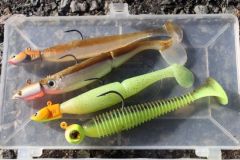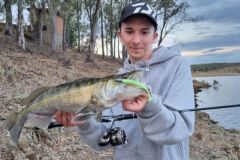There's only one step between pole fishing and worm fishing with a Carolina rig, and that's not to fish statically. In the end, it's a "tug-of-war" style of fishing that twentysomethings may never have heard of.
Simple assembly
The Carolina rig is very similar to the rig you might use for landing fish.
- All you need to do is place a ball lead on the line body (which slips more easily through any obstacles) of a weight corresponding to the depth of the spot, the current and the speed of your animations.
- Then a soft pearl to protect the knot.
- A swivel.
- And finally a leader to which you connect a hook n° 1 to 6 depending on the size of the worms used.
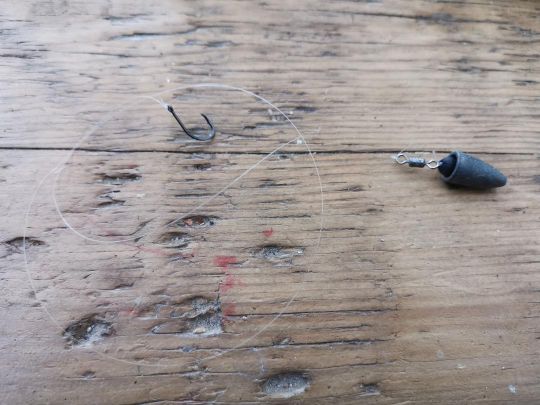
For prospecting large areas
The Carolina set-up is ideal for prospecting large areas, simply alternating shots on the bottom to raise a cloud of sediment (or take off if the bottom catches) and pauses. You can therefore play with the speed of your animations and the length of the pauses to trigger the hits.
This set-up is perfect for prospecting large areas relatively quickly and locating active fish.
A soaring effect
The main advantage of the Carolina rig is to present your worm (or lure) as naturally as possible. In fact, during breaks, your worm will glide down without any constraint other than the weight of the hook and will be able to swim freely in the current.
Length of leader
The length of the leader is a major factor. A good starting point is a length of 40-50 cm, but you can lengthen it for particularly slow fishing and shorten it if you want to fish more actively and with more rhythmic animations. The length of the leader will also depend on how crowded the spot is. The more crowded it is, the shorter the leader needs to be.

A pin to hold the worm
For Carolina worm fishing, I use eye hooks which I connect with a Palomar knot. I deliberately leave a 5 mm piece of line protruding so that it acts as a lug and holds my worm on my leader. This prevents the worm from slipping off the shank of my hook and gives a perfect presentation.
A noisy pearl
When you want to practice faster and provoke the fish, you can replace your soft pearl with a hard one which will produce a "clicking" sound with each animation. During the closed season, choose a neutral-colored pearl so that this subterfuge is not perceived as a lure.
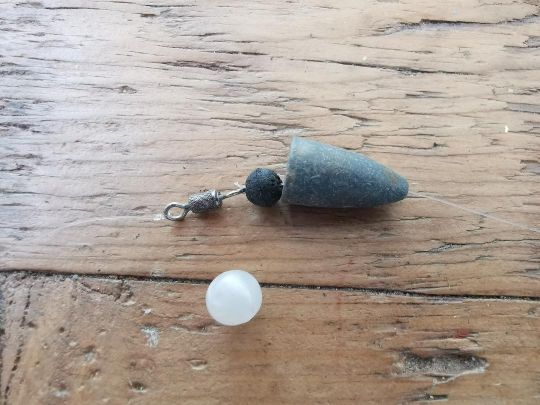
The breakaway assembly for cluttered environments
When I'm fishing in crowded places, I replace my ball lead with a buckshot pinched onto a strand of fine wire that I've connected to my swivel. Pass the line through one of the eyelets and pinch the buckshot onto the two wires, which you cut 1 cm below. In the event of a snag, either the line breaks or the buckshot slips, allowing you to free your rig.
I also like to use this fixed sinker rig with a short leader (15-20 cm) when I'm doing fast, jerky action, especially for perch.
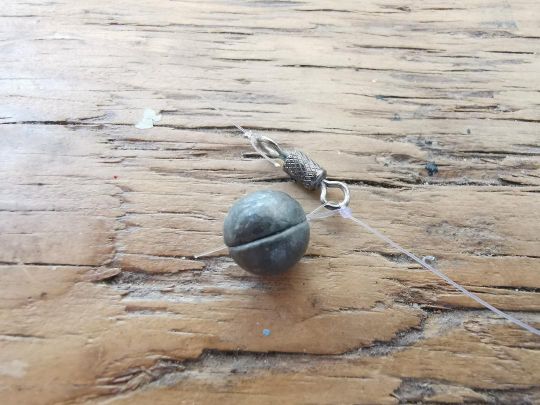
With lures, of course
Outside the closed season, you can of course continue to use this rig but with soft lures. Comma, worm, creature or crayfish imitations are excellent with this rig.
